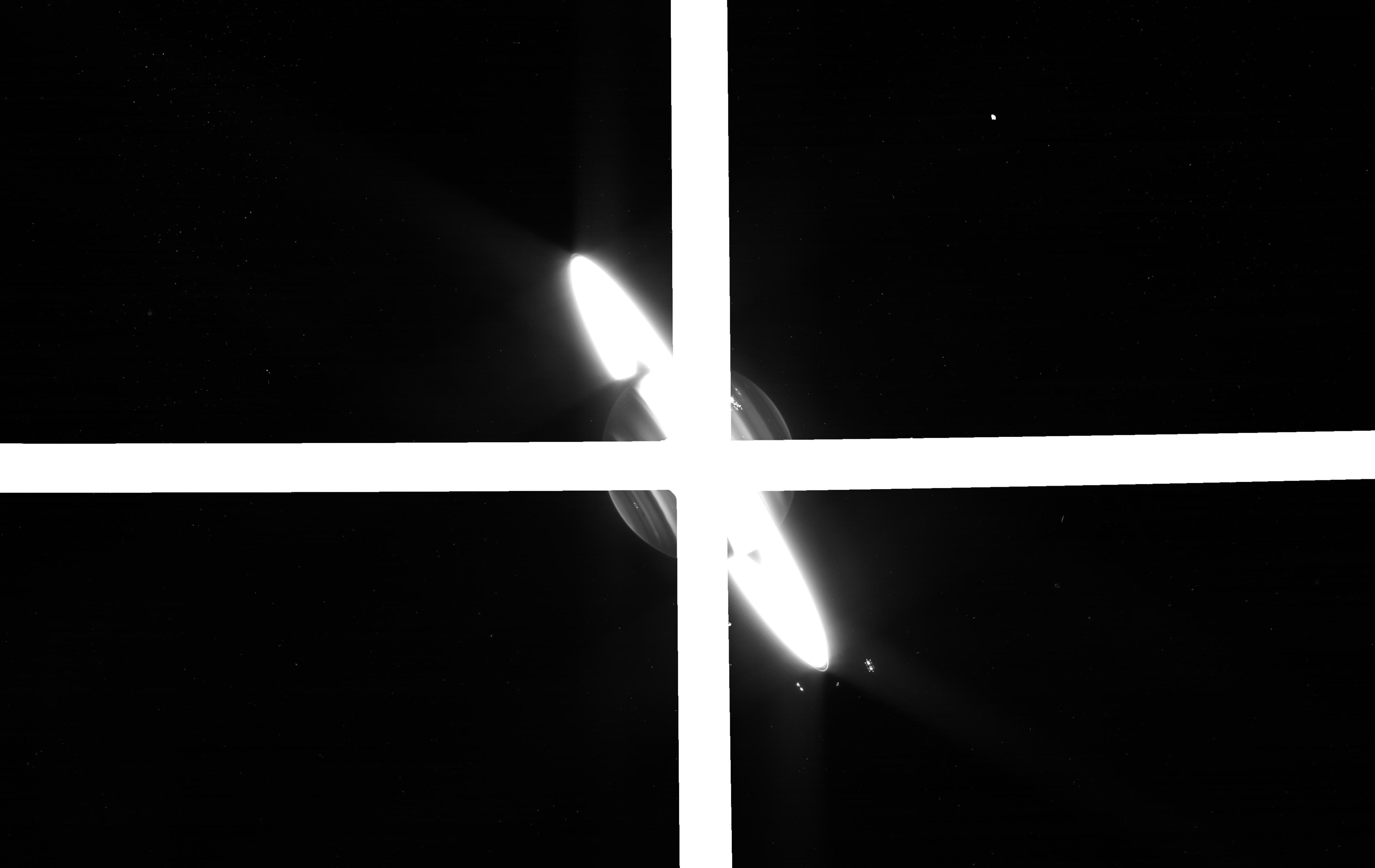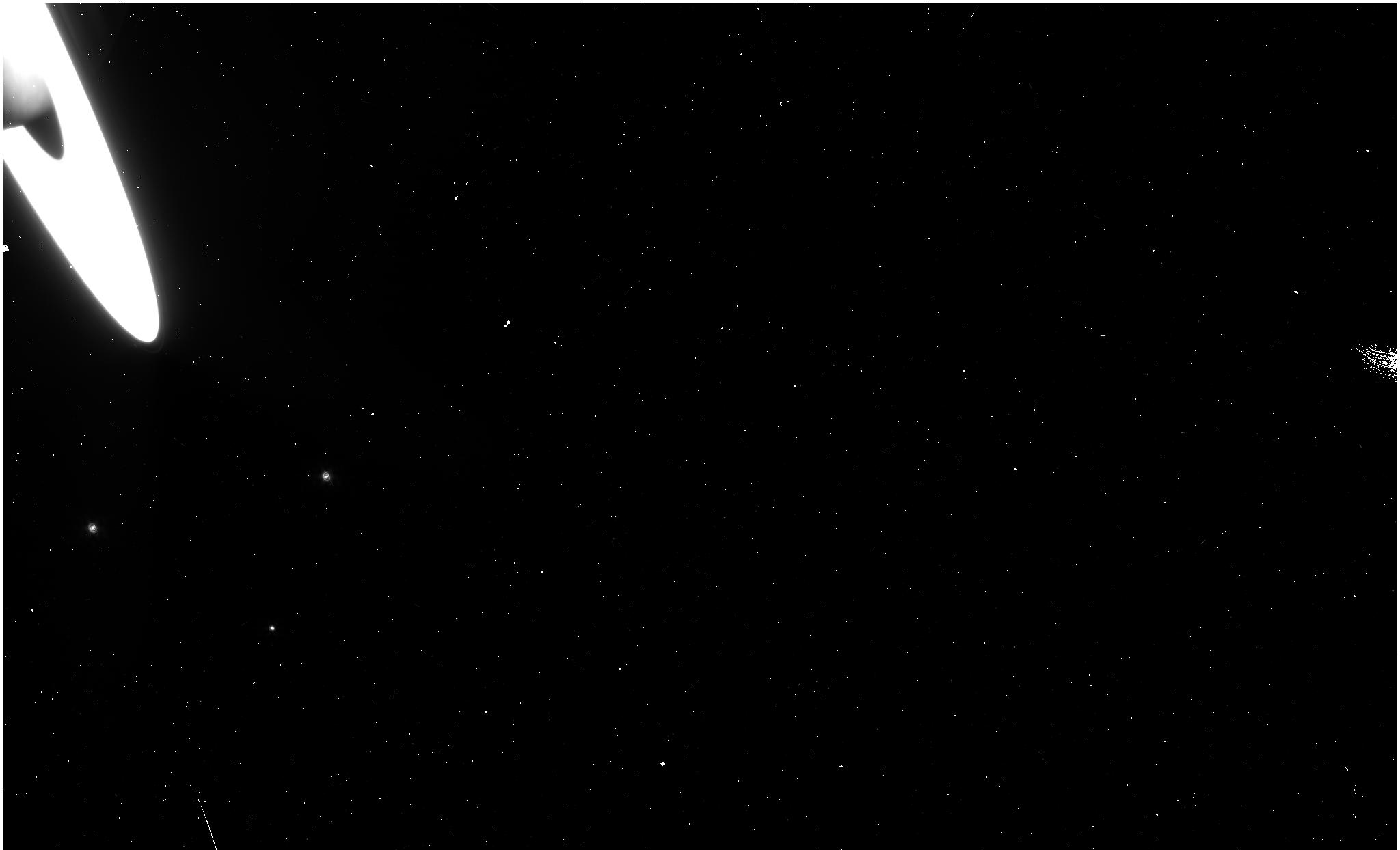The JWST devoted more than two and a half hours of its precious time to observing Saturn this weekend, and the images above and below are among the products. The different images show the planet, its rings, and sometimes its moons as seen using different filters, in some cases really letting the rings steal the show.
To our eyes Saturn and its rings look about equally bright, such that when Galileo first observed the system through a telescope he could not distinguish between them to be sure if they were separate. Even the colors are similar. However, the JWST operates at longer wavelengths than we can see. In the image at the top, taken using the Near-Infrared Camera (NIRCam) instrument, it almost disappears against the blackness of space because the F323N filter was used, which excludes light longer than 3.3 microns and shorter than 3.2 microns.
Methane absorbs radiation in the narrow band between, making the gas giants look dark when this filter is used. The rings, on the other hand, reflect this radiation brightly, causing them to dominate the image.
Don’t be disturbed by the spots of light on Saturn in the top image, as some people have been on social media. They are neither stars mysteriously shining through Saturn, nor some sort of storm. Instead, they represent cosmic rays affecting the image like dust on the lens of an earthly camera. They’ll be removed in processing.
The top image only took a little more than four minutes of the observing time at the end of the observing run. The below image was taken at the same time, and also used NIRCam, but combined it with the F212N filter instead. At these shorter wavelengths Saturn looks brighter, and we can see some of the banding.

Saturn and its rings as seen at 2.1 microns in the F212N filter.
Image credit: ESA, NASA, CSA
Another image, also taken with the F212N filter but now with Saturn moved to the corner, reveals some moons, along with background stars and the cosmic ray flashes. To fulfil the promise of studying the output of the geysers of Enceladus will require far longer exposures, however.

Moving the planet almost out of view allows the rings to dominate even more.
Image credit: ESA, NASA, CSA
Some astrophotography fans have already been so taken by the 3.2-micron images that they have applied their own processing.
These and other images were taken in two periods of an hour and 19 minutes each, allowing moons to shift in their orbits and cloud patterns to alter slightly in between. Most of the intervening time was spent observing the TRAPPIST-1 system, home to seven rocky planets, some of which are still considered candidates for habitability – although the innermost worlds have recently been revealed to lack atmospheres in previous JWST observations.
Source Link: The JWST Has Taken This Stunning Image Of Saturn And More